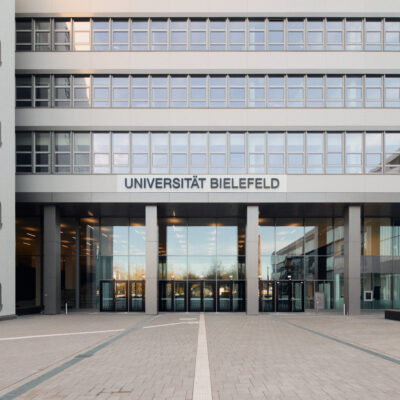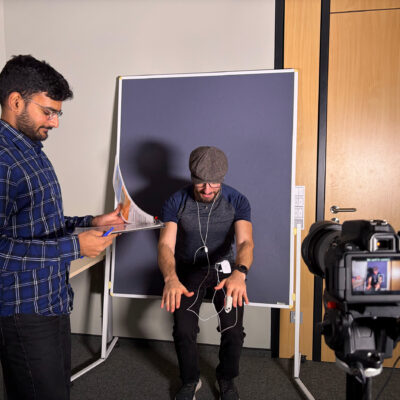Physicists Dr. Olaf Kaczmarek and Dr. Christian Schmidt-Sonntag of Bielefeld University have secured 82 million core hours on the most powerful supercomputers in Europe. This will not only speed up the research process in their respective projects on heavy quarks in a plasma of quarks and gluons (Dr. Kaczmarek) and the phase diagram of quarks and gluons (Dr. Schmidt-Sonntag), but also highlight the importance of their work. The researchers’ findings will later be transferred to the Bielefeld supercomputer at the Bielefeld GPU Cluster and be made publicly accessible.
Supercomputers are often indispensable in modern scientific research: they are an essential tool for processing the ever-increasing volumes of data needed for statistics, forecasts, and other calculations across a wide range of disciplines.
The collaborative ‘European High Performance Computing Joint Undertaking’ (https://eurohpc-ju.europa.eu) project has invested a great deal of funding into the construction of new European flagship supercomputers over the past years. Since June 2023, the supercomputers ‘LUMI’ in Finland and ‘Leonardo’ in Italy came in third and fourth place in the global ranking of the 500 most powerful supercomputers around the globe. First place is currently held by the ‘Frontier’ supercomputer in the United States, and second by ‘Fugaku’ in Japan.
As responsible project leads for an international team of scientists, Bielefeld researchers Dr. Olaf Kaczmarek and Dr. Christian Schimdt-Sonntag were successful in the first round of a call for applications for computing time on these systems. The won out over myriad competitors from around the world in a rigorous application review process and have now been allocated 60 million core hours on LUMI-G and 22 million core hours on Leonardo – corresponding to the annual computing power of 20,000 and 6,000 laptops, respectively. This computing time will facilitate their research, which investigates the properties of matter under extreme conditions.
This research into extreme conditions of matter deals with temperatures and particle densities that are, for instance, believed to have been present in our universe shortly after the Big Bang, but also with temperatures and particle densities similar to those produced and measured in heavy ion experiments in the Large Hadron Collider (LHC) at the ‘CERN’ European Organisation for Nuclear Research in Geneva, Switzerland, and in the Relativistic Heavy Ion Accelerator (RHIC) at the Brookhaven National Laboratory (BNL) in Long Island, New York. These research projects are part of the Collaborative Research Centre TransRegio 211, ‘Strong-Interaction Matter under Extreme Conditions’ (https://crc-tr211.org/), which brings together researchers from the Goethe University Frankfurt, Bielefeld University, and the Technical University of Darmstadt.
As members of the North Rhine-Westphalian Competence Network for High-Performance Computing (HPC.NRW), a consortium that was recently extended through the end of 2024, Olaf Kaczmarek and Christian Schmidt-Sonntag provide support to Bielefeld researchers and their projects at the Bielefeld GPU Cluster, and also offer advice on how to apply for computing time at other supercomputers in the region, namely in Germany and Europe.




